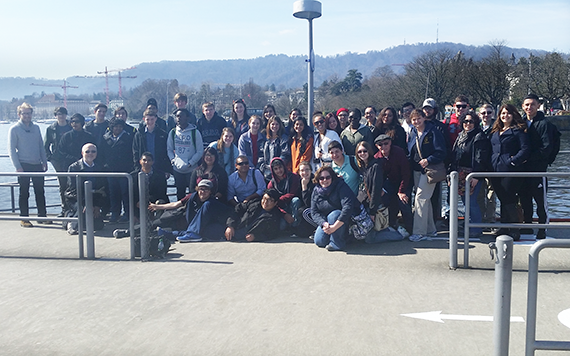While in Munich, students immersed themselves in German life dancing to the folk-music of the Neues Rathaus’s Glockenspiel, tasting typical foods, and viewing the Ollympiapark, a new suburb built for the 1972 Olympic Games. They also visited the BMW Museum, and the Deutsches Museum of science and technology. However, the most appealing place for them was Dachau, Nazi Germany’s first concentration camp.
This concentration camp truly touched students’ hearts. They could feel the freezing cold, the suspense, the trauma, and the suffering Jews experienced. Students scrutinized every corner of this camp: the gas chamber and crematorium, restored as a memorial to the 206,000 prisoners interned from 1933 to 1945; the barracks, and the small church where they attended; the small cemetery where ashes were thrown and where some were buried; the museum that examines pre-1930 anti-Semitism, the rise of the Nazi party; and, the documented lives of prisoners. Silently, students watched a video of actual footage taken at the camp during the time it was opened; most were unable to hold back their tears.
On a happier note, students visited the birthplace of the prodigal composer Mozart, in Salzburg, Vienna. They took a glimpse of his humble home, a sample of his hair, his actual writings and compositions, his piano and violin, and felt the rhythm of Salzburg’s Old Town Square. They were astonished to see such an impressive collection and admired his talent and achievements as a young composer. In the evening, they attended a live concert to hear the best of classical music composed by Mozart. Its spiritual undertones and carefree finales compelled them to get lost in the complex melodies imagining Mozart playing at age of 17. It was a cultural treat for their ears and spirit. Finally, students explored Vienna on a cruise; they admired art in the riverbank as they cruised the Danube River, Europe’s second largest river and the only one flowing from west to east. They learned how vital transportation was 2,000 years ago.
Next year, students will have the opportunity to travel to China (Beijing & Shanghai) and learn about its art, culture, and history.



